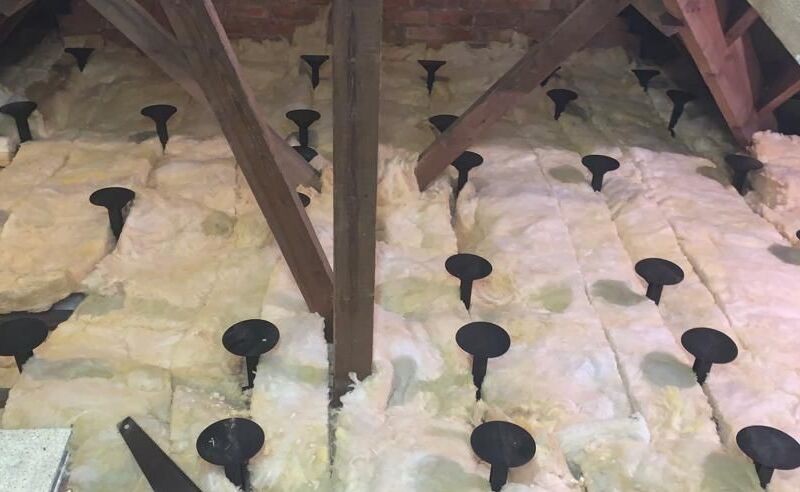Can Loft Insulation Cause Mould?
Loft insulation is designed to make your home warmer and more energy-efficient, but if it's not installed correctly or if the wrong materials are used, it can create the perfect conditions for mould growth. Mould in the loft is more than just an inconvenience it can damage roof timbers, reduce air quality, and even affect your health.
At Countrywide Roofing & Insulation, we're often called out to properties where poor insulation choices, trapped moisture, or spray foam installation have caused significant mould problems. Understanding the link between loft insulation and mould is the first step to protecting both your property and your family's wellbeing.
Moisture Management and Mould Prevention:
Ventilation: Proper ventilation is crucial for preventing mould growth. Adequate airflow helps control moisture levels and prevents condensation from accumulating in the loft space. It is essential to ensure that your loft has appropriate ventilation, including ridge vents, soffit vents, or mechanical extraction fans, to promote air circulation and reduce the risk of excess moisture.
Vapor Barriers: The use of vapor barriers in conjunction with insulation can help manage moisture and prevent condensation. Vapor barriers are installed on the warm side of the insulation to inhibit the movement of moisture into the insulation layer. They act as a barrier against moisture migration, reducing the risk of mould growth.
Moisture Sources: It's important to address any potential sources of moisture in the loft. Leaks from the roof, plumbing, or condensation from inadequate ventilation should be promptly identified and repaired to prevent moisture accumulation. Regular inspections and maintenance can help identify and resolve any issues that may contribute to mould growth.
Debunking Misconceptions:
Insulation Alone Does Not Cause Mould: Loft insulation, when installed correctly and accompanied by proper moisture management, does not cause mould growth. Mould requires a moisture source to thrive, and insulation alone does not provide that source. It is important to address any underlying moisture issues and implement effective moisture control strategies in conjunction with insulation.
Incorrect Installation or Inadequate Ventilation: Mould growth may occur if insulation is improperly installed, leading to moisture traps or inadequate ventilation. This emphasises the importance of hiring professionals, like Countrywide Roofing, to ensure proper insulation installation and ventilation systems are in place.
Conclusion
While loft insulation is essential for keeping your home warm and energy-efficient, it must be installed with care and the right materials. Poor installation, lack of ventilation, or unsuitable products like spray foam can trap moisture and create the perfect environment for mould. Left untreated, this can damage your roof structure, reduce air quality, and even impact your health.
At Countrywide Roofing & Insulation, we specialise in identifying insulation problems, safely removing faulty materials, and installing modern, breathable alternatives that prevent mould and protect your property for the long term. If you're concerned about mould in your loft, our expert team is here to provide clear advice and effective solutions. Contact us today.
Areas we Cover
Bath, Birmingham, Bournemouth, Brighton, Bristol, Cambridge, Canterbury, Cardiff, Coventry, Dorchester, Enfield, Exeter, Gloucester, Guildford, Hereford, Hemel Hempstead, Kingston-upon-Thames, Leicester, Luton, Milton Keynes, Newport, Northampton, Oxford, Peterborough, Plymouth, Portsmouth, Reading, Redhill, Salisbury, Slough, Southall, Southampton, Stevenage, St Albans, Sutton, Swindon, Taunton, Tonbridge, Torquay, Worcester
By accepting you will be accessing a service provided by a third-party external to https://countrywideinsulation.co.uk/



